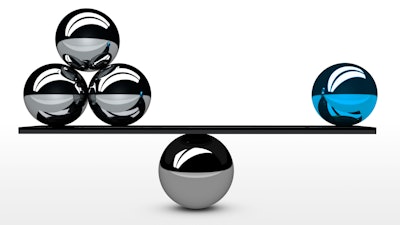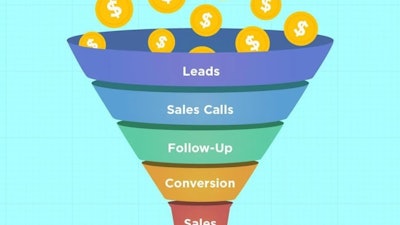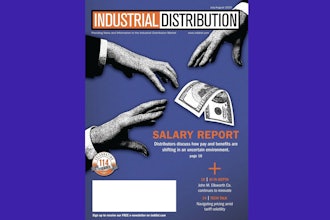
It doesn’t matter what you sell: industrial supplies, food & beverages or women’s shoes — tracking is a key component of any successful salesperson.
You might say, “yeah, but my company already has reports that track my performance.” Are you really going to rely on reports that are probably made up by non-salespeople that are supposedly designed to help propel you forward? You will also find that a lot of common tracking or reporting is focused entirely on the wrong set of numbers.
The key to personal success in sales is for you to take responsibility and decide for yourself — what’s valuable are the indicators that will help determine your success rate.
The old-school way of thinking is that volume will determine success. It is the classic upside-down funnel model of sales.

The funnel will show that the more calls you make (That pours into the funnel first), the more appointments you will get set, that will turn into more leads, which allows you to quote more, which will lead you to even more sales.
This is wrong.
We live in the information age, so scrap this way of tracking numbers. You will find most companies cannot make this paradigm shift, so you may have to take it upon yourself to track what’s really important.
It isn’t a volume game. I had an old boss who was like this and was tied to making more and more sales calls. He was wise enough to let me do my own thing that worked out well for everyone.
A salesperson can run seven to even ten sales calls a day, every day, and I will run less than half that many but outsell them by a mile. I have done this throughout my career. How is this possible?
I do not run a sales call just for the sake of saying that I ran another sales call that particular day. I bring some sort of value to all the sales calls that I go on. It isn’t about the volume of calls or visits. It’s about the quality of the sales call.
I am not showing up just to check in with a current or potential customer or to see what’s going on — I am showing them a better way to place orders; helpful ways to better manage their technicians and inventory control tools; and offering various sales techniques.
The point is, I am there to provide value, not donuts. The salesperson who provides the most value wins.
Everyone sells fasteners, bearings, hand tools and safety equipment. You can buy these products from any number of supply houses all over town, but you need the person who can help you to be more effective and efficient. If you can help your customers to become more profitable, you’re going to win the day. How knowledgeable are you, and have you learned how to become a trusted advisor to your customer?
I don’t feel the need to run X number of leads per week or to quote X amount of dollars. What’s important is the amount of sales I bring in. The most important number is not even the amount of sales but the amount of gross profit dollars and the gross profit percent I can bring to my company. Sales will not buy you a cup of coffee, but enough gross profit dollars can buy you the entire coffee shop.
If I make a ton of gross profit dollars but at a very low gross margin, the company will not make any real money. The volume of sales to make the low margins will usually mean hiring additional sales support staff — whether that is more counter help or people in the warehouse — more overhead will be needed to handle the volume. The company will get bigger but not more profitable.
What needs to be tracked is, “am I really selling the right product mix to my customers? Do my customers only buy the inexpensive, low-margins products or am I able to teach my customer to upsell to their clients?” I try to pick the top-tier customers who already understand the value of upselling and then provide them some additional assistance. Working with smart customers who already get it is a key — they produce more gross margin dollars and take up less of your time.
I try to pay attention not only to what my customers are buying from me, but to what they are NOT buying from me. You can’t sell everyone everything, but I sure as heck try. You need to be a one-stop-shop, making things easier for your customers. Convenience is king.
I do track how often I touch all of my top accounts. I need to be present, and they need to feel I am there for them, whether they call after hours or I can only meet with them first thing in the morning. It is good to have a strong working relationship, and even better to have an element of friendship. If all things are equal, you will always do business with the person you like the most. I am never fake or phony — people can tell, plus that’s just not me. I find that most of my customers have similar likes and dislikes as me. If you look hard enough, you will find smart, likeable customers and you will not only sell more but you will enjoy your job all the more.
 Sterling
Sterling
Forget trying to run so many sales calls per day. Slow down, analyze and do it right.
Darrell Sterling is a regional sales manager for Johnstone Supply, an HVAC supplies distributor in Central New York. He can be reached at [email protected] or 585-441-0335.






















